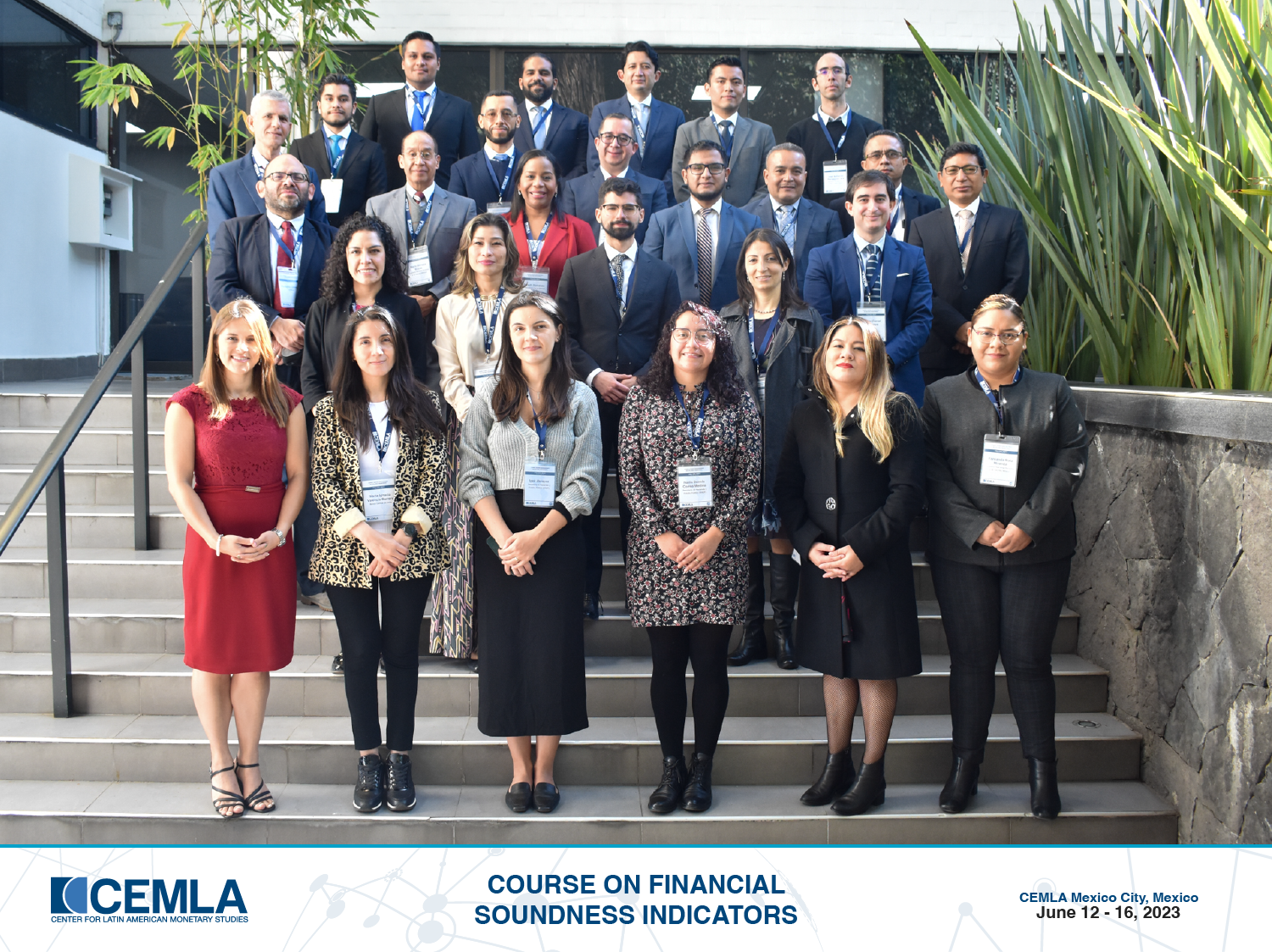

Disponible en
Español
![]()
Course on Financial Soundness Indicators
January 23 to 27, 2023
CEMLA Mexico City, Mexico
The course was carried out from January 23 to 27, 2023, by CEMLA under the auspices of the Statistics Department of the International Monetary Fund (IMF). The main objective was to familiarize participants with the fundamentals of the compilation and use of Financial Strength Indicators (FSI) as support for macroprudential analysis. The program covered methodological and technical topics related to the construction of Financial Solidity Indicators, as established in the New Compilation Guide for Financial Solidity Indicators, 2019.
In the course, participants were trained in compiling FSIs in accordance with the New Guide methodology using data from sectoral financial statements and supervision reports. Likewise, ISF were calculated using different consolidation bases and the results obtained were interpreted. Finally, the FSIs of the financial sector were analyzed and interpreted and their use in the supervision of the financial sector for macroprudential policy was deepened.
The course began with a presentation on the background of the IMF's work on FSIs. In subsequent sessions, different concepts related to institutional sectors and financial markets were discussed, such as residence and institutional units, classifying them according to their functions within the institutional sectors, continuing with the concepts of control and consolidation of groups for the compilation of the ISF.
The regulatory principles for financial institutions were analyzed in accordance with the Basel I, II and III Accords and their implications for the preparation of the FSI, addressing the issues of capital requirements for financial institutions, their leverage levels and degrees of liquidity. . .
Subsequently, accounting principles for FSIs were addressed. The financial instruments, the income and expense templates in the ISF declaration formats and the accounting rules for carrying out the calculations were analyzed.
The program continued with the analysis of the financial statements to prepare the FSI, emphasizing the sectoral balance sheet and the income statement to obtain the underlying series of the FSI. The following sessions continued with the analysis of the basic FSI for depository institutions, in particular the source data, its calculation and its analysis from the point of view of financial stability. These FSIs make it possible to evaluate the solidity or vulnerability of financial systems.
Additional FSIs for depository institutions, for other financial institutions, and for non-financial households and firms were discussed in subsequent sessions, equally emphasizing data sources, calculation methods, and their analytical value from the point of view of financial stability. These ISFs provide a forward-looking view of the strength of these institutions.
Finally, the course analyzed the characteristics of the real estate markets and their impact on the financial sector, as well as the calculation of FSI for said market. Throughout the different sessions, various exercises related to the estimation of the ISF and its analysis were carried out.
The course was attended by 25 participants from 9 countries, in addition to the IMF speakers.
International Monetary Fund
- José Carlos Moreno Ramírez
- Luis Martín Auqui Cáceres
- Héctor Cárcel Villanova

